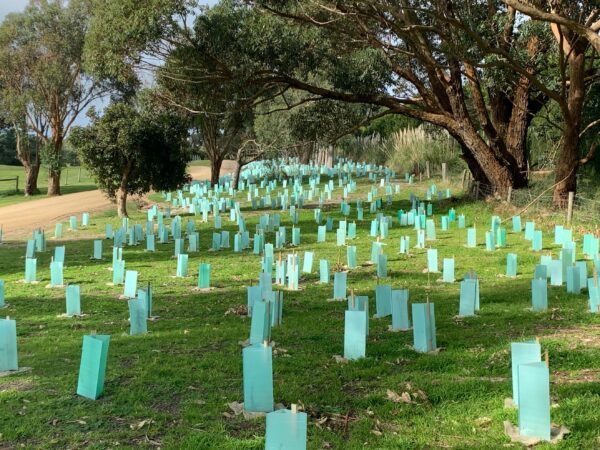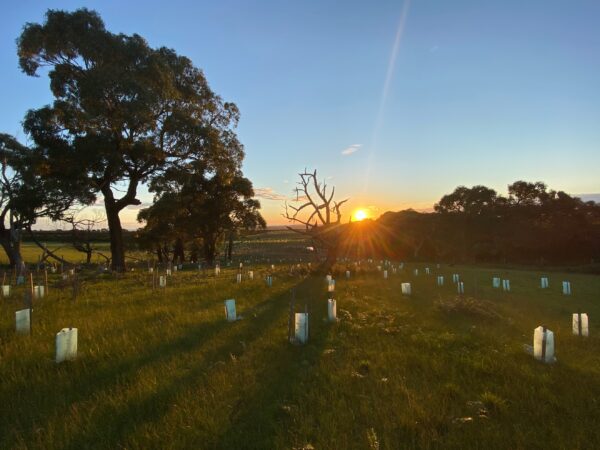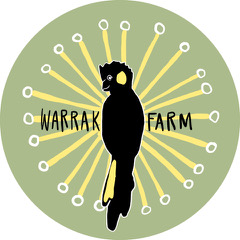| A Personal Perspective on Biolink Participation
In 2006 our family bought a 60-acre farm in Boneo, a short walk from Greens Bush National Park, the major feature of scattered patches of remnant bushland that earlier colonists left untouched or left alone to regenerate. On Google Earth, this remnant bush appears as islands of refuge for flora and fauna, unconnected with few safe corridors for movement.
It took a chance encounter with a local conservationist for my eyes to be opened to the plight of this region. Put simply, there are two significant patches of remaining bushland on the Mornington Peninsula: Arthurs Seat State Park and Greens Bush National Park and very few safe wildlife corridors to connect them.
To address this lack of landscape connectivity Mornington Peninsula Landcare have been working with private landholders to re-establish the physical links plants, animals and birds need for migration, colonisation and breeding through its Biolink program. It was explained to me how our property could be a valuable part of the link because the surrounding properties use wildlife exclusion fencing, therefore our farm is a safe first stop for kangaroos leaving Greens Bush if they do not want to use the roadway.
For this reason alone, we were on board; little did I know how enriching and educational the collaboration would be. It is a gift that keeps on giving. In April 2019 a conservationist and a Landcare representative walked the paddocks with me to suggest areas for regeneration. I was easily persuaded to fence off the few lonely Eucalyptus cephalocarpa, Silver-leafed Stringybarks who were looking the worse for wear from cattle rubbing up against them. The area we ‘rescued’ is a long rectangle of just under 3 hectares with a small wetland. Luckily for us, it is adjacent to a neighbour’s area that had been regenerated forty or fifty years ago. We could see the flora bursting through the fence, desperate to spread.
 In this first phase – June and July – we planted 2,835 indigenous trees, shrubs and wetland plants, aided by fantastic volunteers and TAFE students and teachers for Chisholm and Holmesglen. At the end of the first phase of planting we walked the area again and the conservationist was delighted to spy tiny sun and leek orchids that had a ppeared once the livestock had been removed. For me, the area became an enchanted place, full of potential, brimming with new life, welcoming again. In this first phase – June and July – we planted 2,835 indigenous trees, shrubs and wetland plants, aided by fantastic volunteers and TAFE students and teachers for Chisholm and Holmesglen. At the end of the first phase of planting we walked the area again and the conservationist was delighted to spy tiny sun and leek orchids that had a ppeared once the livestock had been removed. For me, the area became an enchanted place, full of potential, brimming with new life, welcoming again.
 We decided to extend our commitment to the Biolink project and allocate more land, another 1.17 hectares, and this became phase 2. A long strip of land along the driveway to give cover to kangaroos coming off the road, the removal of a fence to given them free movement through the landscape and another paddock with a large pond were designated for regeneration and plants were ordered. In March, around 3,000 plants arrived but this time the scheduled teams of volunteers were cancelled due to Covid19. The family and a smattering of volunteers would be the entire labour team, and this was tirelessly overseen and guided by the Biolink Project Coordinator Chantal Kelly who was there for us through all weather, professionally navigating Covid restrictions, all the while knowing the imperative was to get these plants in the ground. We decided to extend our commitment to the Biolink project and allocate more land, another 1.17 hectares, and this became phase 2. A long strip of land along the driveway to give cover to kangaroos coming off the road, the removal of a fence to given them free movement through the landscape and another paddock with a large pond were designated for regeneration and plants were ordered. In March, around 3,000 plants arrived but this time the scheduled teams of volunteers were cancelled due to Covid19. The family and a smattering of volunteers would be the entire labour team, and this was tirelessly overseen and guided by the Biolink Project Coordinator Chantal Kelly who was there for us through all weather, professionally navigating Covid restrictions, all the while knowing the imperative was to get these plants in the ground.
In just over a year we have noticed how much more alive our farm feels. There are more birds, more frogs, definite kangaroo highways. I knew there was method to how and why the plants were selected – food for insects, birds, boosting the various layers of canopy, erosion control and more – but I was frustrated I could not identify the plants we were planting nor appreciate their ecological roles. Also, as a student of First Nations ways of knowing and being – my doctorate studies explored personal decolonisation – I was keen to understand how these indigenous plants had been of service to the First Peoples for millennia. To fully appreciate and celebrate the regeneration via the Biolink Project I have researched and compiled a detailed Warrak Farm plant list with added information to expand our knowledge bases.
 The First People of this region, the Boon wurrung, have been custodians of this Country for millennia. Colonisation disrupted their ability to care for Country, but the Biolink is an opportunity and invitation for us to take on some of that responsibility and connect with and care for the plants and creatures that are so essential to the health of our small patches and the wider community. The First People of this region, the Boon wurrung, have been custodians of this Country for millennia. Colonisation disrupted their ability to care for Country, but the Biolink is an opportunity and invitation for us to take on some of that responsibility and connect with and care for the plants and creatures that are so essential to the health of our small patches and the wider community.
We would like to wholeheartedly thank the following people for their enthusiasm and guidance:
Chantal Kelly, Project Coordinator
Virginia Carter from Local Habitat
Kate and the team from The Briars
– Aticle and images by Melissa Razuki, a local writer and researcher of decolonising stories |